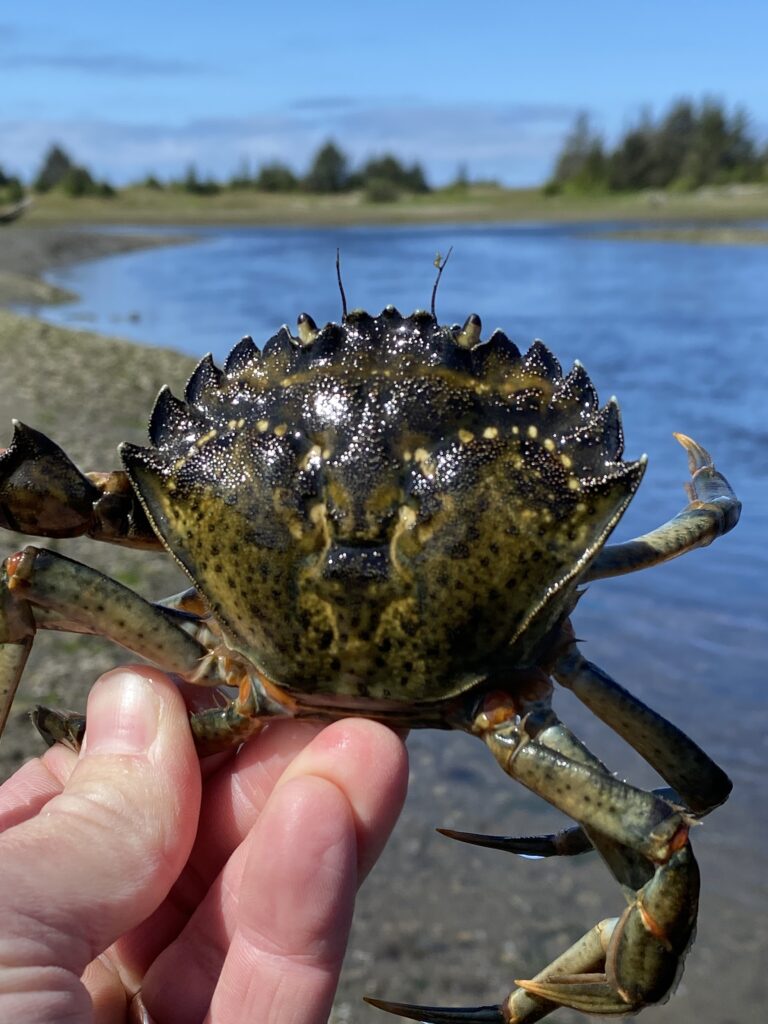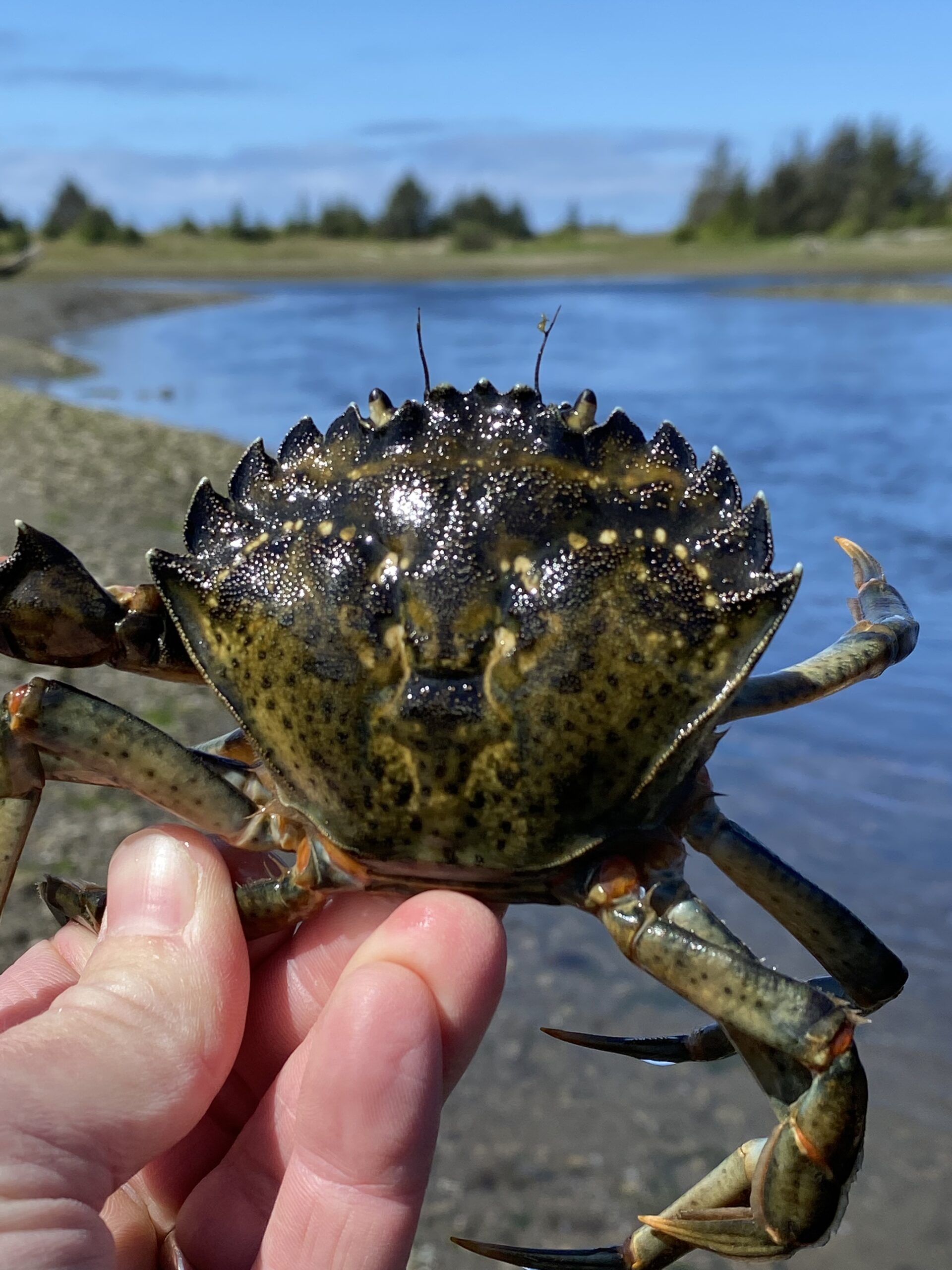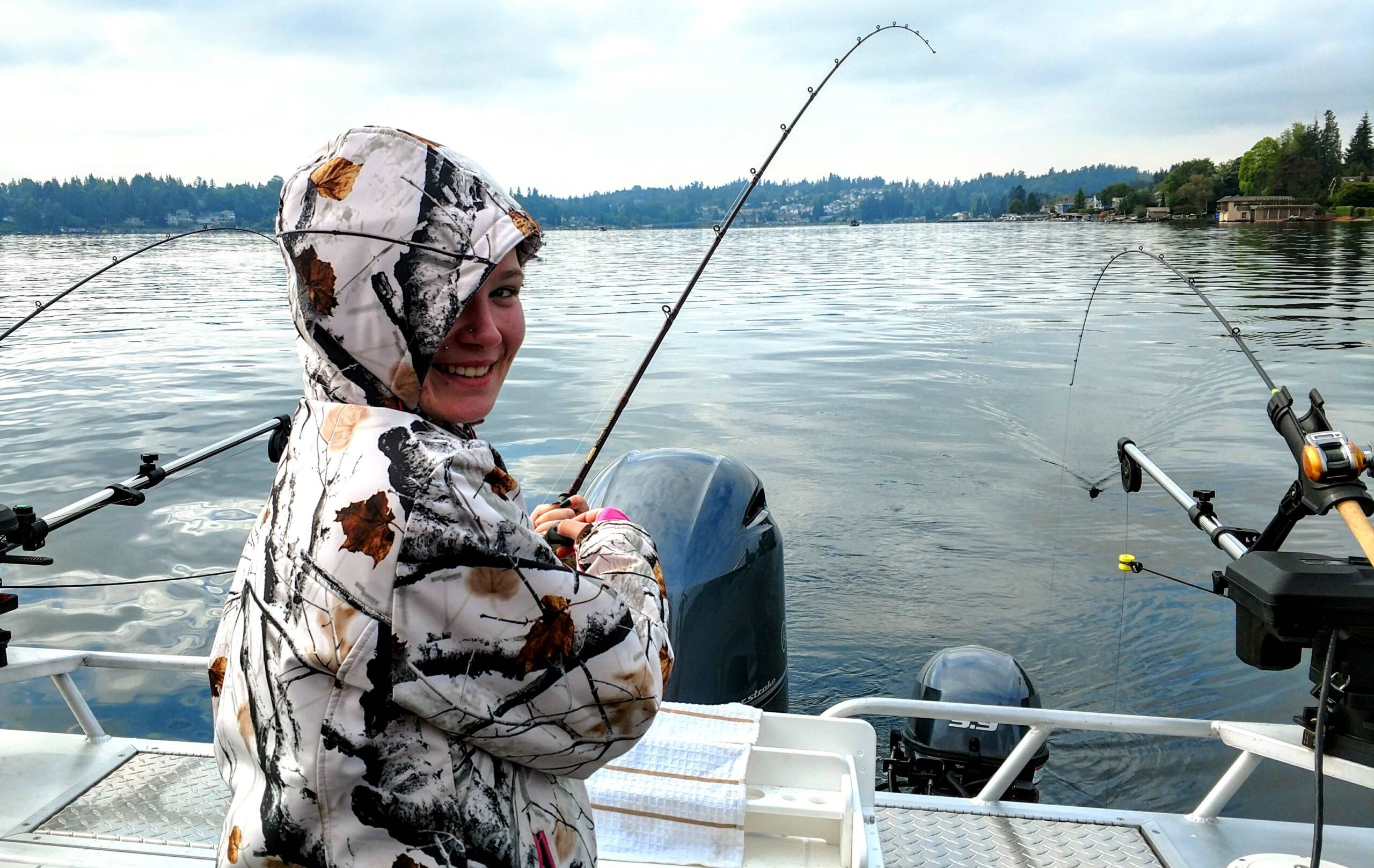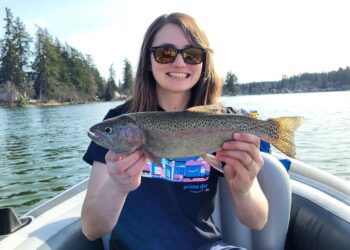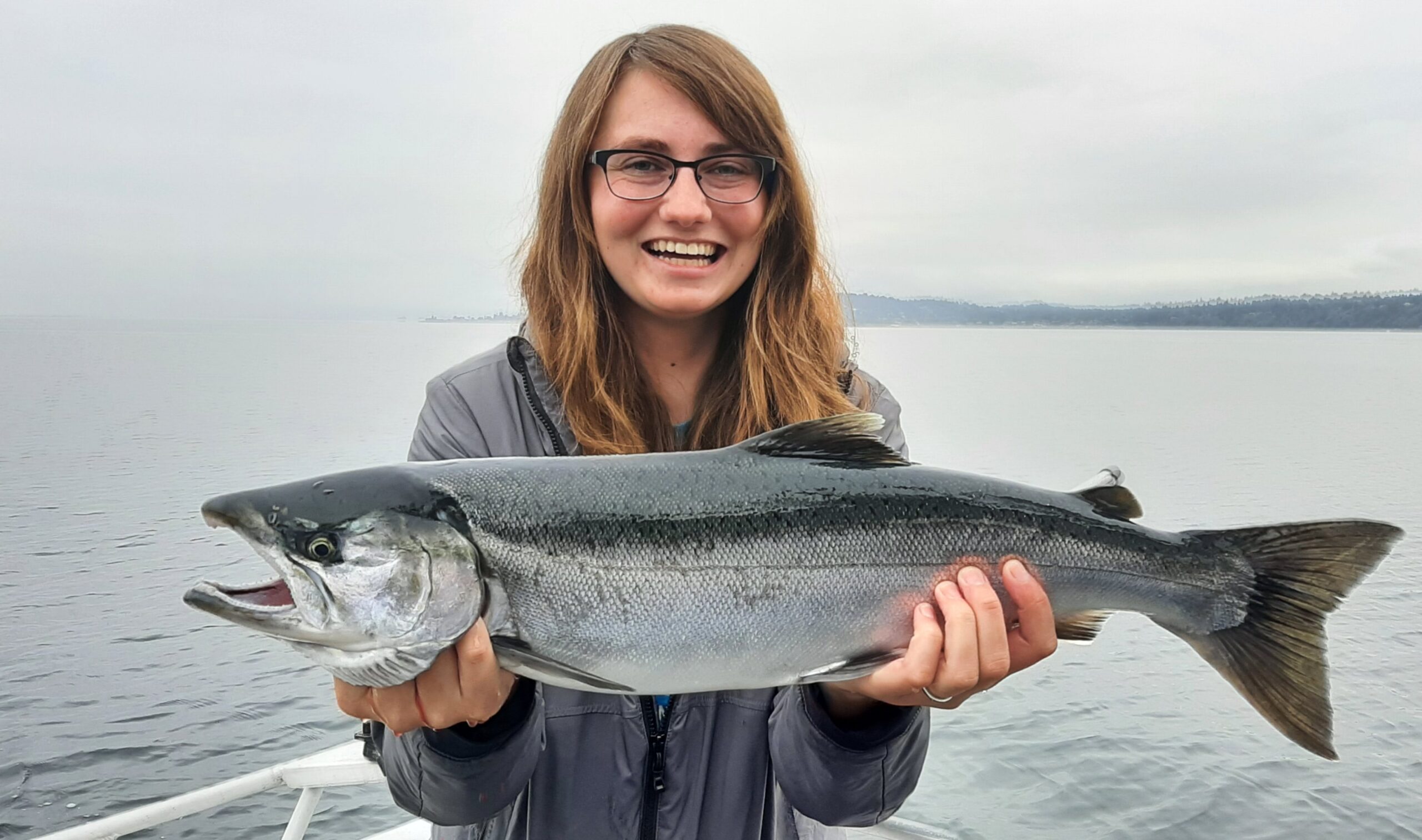If you fish, boat, crab, or just read the news in Western Washington, by now you’ve probably heard about the invasive European green crab. But how to identify this green menace, what are the rules if you encounter one, and what is the state doing about them? Read on for answers as well as tips to avoid spreading these and other aquatic invasive species.
Native to western Europe from the Baltic Sea to Morocco, the European green crab is a damaging crab that threatens native shellfish, estuary habitats, eelgrass, the aquaculture industry, and other recreational, tribal, economic, and environmental values. The European green crab first became established in the United States in the mid-1800s, arriving by ship to New England, where they contributed to dramatic declines in the soft-shell clam fishery.
Studies have shown these voracious shore crabs (meaning they live in shallow, often intertidal waters, including bays, inlets, sloughs, and estuaries) can consume as many as 40 clams a day! In areas where European green crabs have established large populations for extended periods, they have had dramatic impacts on other species, particularly smaller shore crabs, clams, and small oysters.
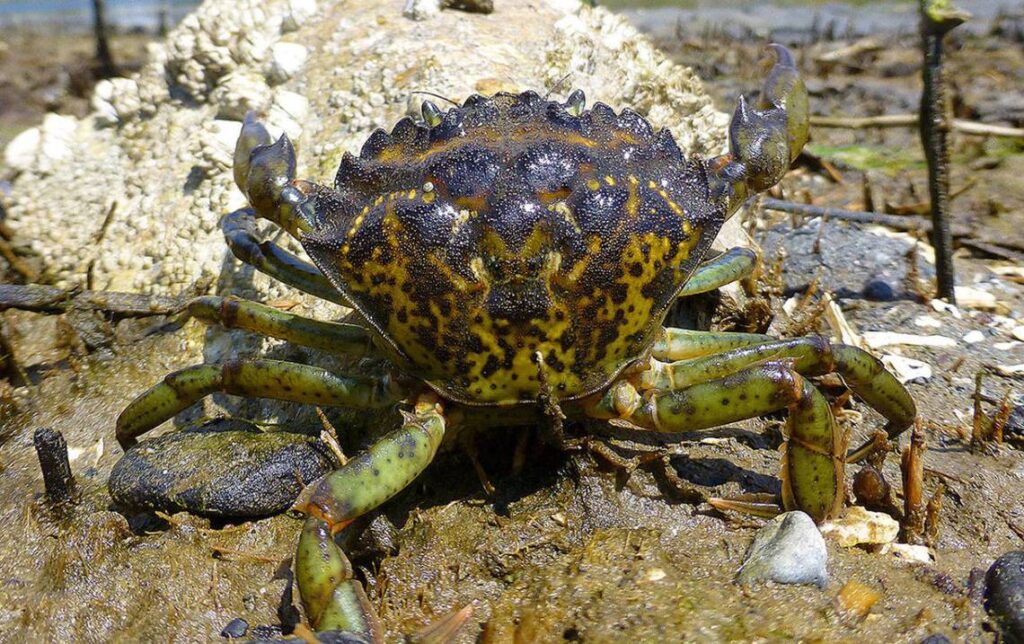
In addition to preying on shellfish, European green crabs are vigorous diggers and have severely harmed New England’s eelgrass beds and estuaries. If allowed to do the same here in the Pacific Northwest, loss of estuary and eelgrass habitat would threaten the harvest of wild shellfish like geoducks and cockles, undermine shellfish businesses, hurt salmon and forage fish recovery, and disrupt complex native food webs. Research is also ongoing regarding potential impacts on juvenile Dungeness crab and crab fisheries.
Back to Washington state, European green crabs were first discovered on our coast in 1998 in Willapa Bay, remaining in small numbers but slowly spreading north over the following decades. European green crabs were first documented in Washington’s inland waters in the San Juan Islands in 2016, and were confirmed near Victoria, British Columbia the previous year.
Beginning around 2018, state and federal agencies, tribes, and partners began to detect significant increases in European green crabs—likely linked to warmer water conditions, especially in 2021—in areas including Willapa Bay, Grays Harbor, Makah Bay, and Lummi Bay. In just a matter of years, green crabs in these areas had exploded from a few hundred to tens of thousands of crabs; necessitating emergency control measures.
Since then, emerging “hotspots” have also been detected in Discovery Bay and Drayton Harbor, as well as smaller numbers of crabs in northern Hood Canal near Seabeck. Most recently, green crabs were detected in May 2025 near Port Gamble.
Thankfully, European green crabs have not yet been confirmed south of Hood Canal and Whidbey Island, including no detections to date in Puget Sound proper.
How to identify green crabs
Don’t be fooled by the name; European green crabs can be green, red, orange, brown, or yellow. To identify them, look for five spines or teeth on each side of the shell. Guides and tips for identification are available from the Washington Department of Fish and Wildlife (WDFW) European green crab webpages and Crabs of Washington identification guide, available online.
People are often surprised by how small these crabs are – the average green crab captured by WDFW is around 2 inches across the shell. They can get up to 4 inches wide, much smaller than mature Dungeness or red rock crabs. In Washington state, the European green crab is most often confused with the native hairy shore crab, helmet crab, or kelp crab.
They typically live in areas with less than 25 feet of water. Beachgoers, waders, clam and oyster harvesters, and people crabbing off docks or piers in shallow areas are most likely to encounter these shore crabs. Recreational shrimpers or crabbers operating in deep water are unlikely to catch them.
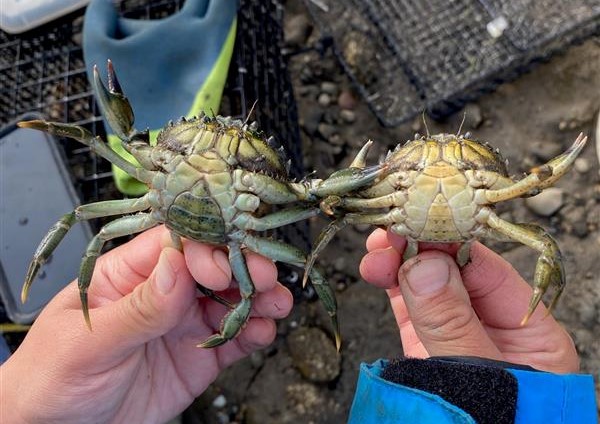
Rules and regulations
If you find a suspected European green crab or its shell in Washington, take photos and report it as soon as possible at wdfw.wa.gov/greencrab or through the Washington Invasive Species Council’s WA Invasives mobile app. Depending on the area, WDFW or permitted partners will follow up with trapping to remove as many green crabs as possible and slow their spread.
As a prohibited invasive species, it is illegal to possess a live European green crab in Washington. Currently, WDFW is not asking the public to kill suspected EGC. This is to protect native crabs, which are often misidentified.
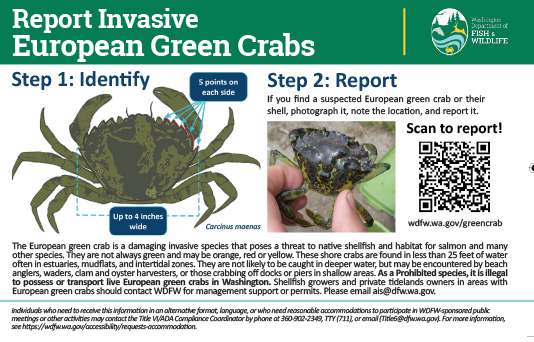
More information on EGC regulations is available on WDFW’s webpage and in the Washington Sport Fishing Rules. Under Washington regulations, prohibited invasive species may be killed and retained if you are certain about species identification and assume responsibility for correct identification and adherence to state fishing rules.
Targeting European green crabs with traps requires a permit from WDFW. If you own or manage shellfish beds, beaches, or tidelands, support and permits for European green crab control may be available. Learn more by contacting ais@dfw.wa.gov.
Managing green crabs
WDFW, tribes, shellfish growers, other agencies, and partners have made significant progress managing European green crabs. Since January 2022, more than one million have been captured and removed, most from Willapa Bay, Grays Harbor, and Lummi Bay.
In 2024, WDFW published a long-term management plan for European green crab after a year-long collaboration with tribal governments, U.S. federal agencies, Washington state agencies, shellfish growers, public universities, and additional partners.
The plan includes detailed guidance for European green crab early-detection monitoring, rapid response, ongoing control trapping, and other efforts across defined management areas and coordination zones for Washington’s Outer Coast and Salish Sea. More information on green crab management, regular catch reports, and more ways to get involved can be found on the WDFW website.
You can also help prevent the spread of European green crabs and other aquatic invasive species by practicing Clean, Drain, Dry methods with all your gear, equipment, and watercraft. Visit WDFW’s webpage or search “Clean, Drain, Dry” for tips on ways to prevent green crab larvae, which can be very small and hard to see, and other invasive species from hitching a ride on your equipment.
